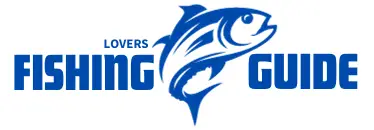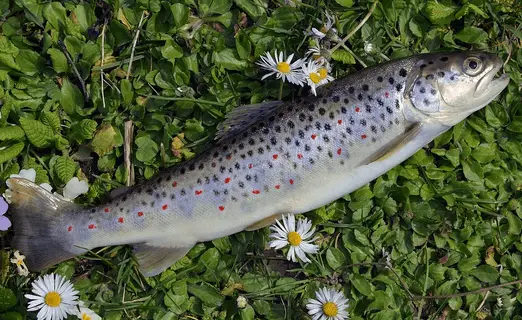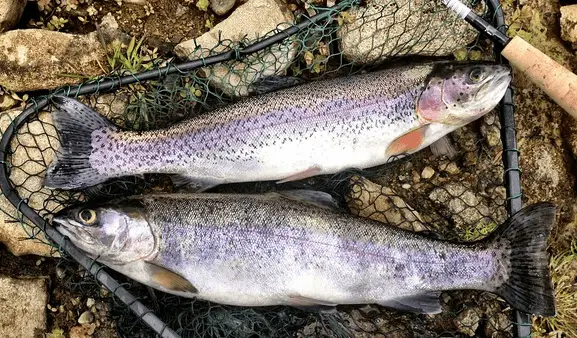Learn about on best time to fish for trout with the help of my lesson. This step by step guide is very simple and helpful.
Trout fishing demands a blend of skill, patience, and timing. Understanding trout behavior is crucial to capitalize on their feeding patterns. Anglers often find success by striking at dawn or dusk when these elusive fish are most active and hunting for food.
Seasonal fluctuations play a significant role in trout activity as well; spring and fall generally offer the best opportunities due to favorable water temperatures. The precise timing for trout fishing can vary depending on the species and the local environment, but aligning your fishing trips with these periods enhances the chances of a successful catch. Dedicated enthusiasts will also monitor water conditions, as trout are sensitive to changes in temperature and clarity, which can directly influence their behavior and feeding habits.
Best time to fish for trout
The best time to fish for trout is usually early morning or late evening. Optimal conditions often occur during stable weather patterns.
Seasonal Shifts In Trout Behavior
Understanding the seasonal shifts in trout behavior is crucial for anglers. Trout, like many fish, respond to changes in their environment. These changes significantly influence their feeding patterns and habitat preferences. Knowledge of these shifts allows anglers to adjust tactics and increase their chances of a good catch.
Spring Awakening: Trout Fishing In Melting Waters
With the arrival of spring, melting snow and ice alter river landscapes. Here’s what happens:
- Water temperatures rise, stirring trout from winter lethargy.
- Insects hatch profusely, offering ample food for hungry trout.
- Stream flows increase, leading trout to seek calmer waters.
During this period, focus on areas where the current slows. Look for trout in pools, eddies, and behind structures. Use lighter lures and smaller flies to mimic the abundant spring insects.
Summer Strategies: Early Mornings And Late Evenings
Summer brings a different challenge. Warm weather can cause trout to become lethargic during peak daylight hours. To adjust:
- Use the cool of early morning and the dim of late evening.
- Trout feed actively when the sun is low and water temperatures drop.
- Target shaded areas, where trout escape the summer heat.
Opt for dry flies and surface lures to exploit trout surface feeding habits. Summer nights can be especially rewarding for those who know how to use the darkness to their advantage.
Weather Patterns And Trout Activity
Trout fishing success can often hinge on understanding weather patterns. Weather influences water temperature, oxygen levels, and food availability for trout, making some conditions better for fishing than others. Knowing how the weather affects trout behavior enhances the chance of a rewarding fishing adventure.
The Barometer Effect: Pressure Changes And Bites
Barometric pressure sways trout activity levels. Generally, stable or rising pressure leads to better fishing conditions. A drop in pressure, however, often signals a storm and could make trout feed more aggressively. Anglers should monitor pressure trends before planning their trip.
- High pressure: Trout become active and feeding increases.
- Low pressure: Look for a potential feeding frenzy, but be cautious of weather changes.
- Stable pressure: Predictable trout behavior, offering consistent fishing opportunities.
Cloud Cover And Rain: Opportunities For Success
Cloudy skies can offer ideal conditions for trout fishing. Cloud cover shields trout from direct sunlight, making them less skittish and more willing to venture from cover for food. Light rain can also stir up insects, coaxing trout to the surface in search of a meal.
| Weather Condition | Trout Response |
| Overcast Skies | More feeding near the water’s surface. |
| Light Rain | Increased surface feeding activity. |
| Heavy Rain | Be cautious; increased water flow can alter fish locations. |
Remember, unpredictable weather calls for flexibility and readiness. A sudden weather change could provide a sudden, optimal window for trout fishing.
Understanding Trout Feeding Cycles
Understanding Trout Feeding Cycles is crucial for anglers seeking a successful catch. Trout tend to feed actively when conditions are optimal, aligning with their natural patterns. Knowledge of feeding cycles can dramatically increase the likelihood of a fruitful fishing trip.
Insect Hatches: Timing The Trout’s Diet
Insect hatches are like a dinner bell for trout. The emergence of aquatic insects from the water signals a feast for hungry trout. By understanding insect hatches, anglers can determine the best fishing times.
- Mayflies, caddisflies, and stoneflies hatch at different times, often linked to the time of day and season.
- Observing water surface activity provides clues to the types of insects present.
- Match your fly with the prevalent hatching insects to increase catch rates.
The Role Of Water Temperature
Water temperature significantly influences trout feeding habits. Trout prefer specific temperature ranges for feeding.
| Temperature Range (Fahrenheit) | Trout Activity |
| 50 – 55°F | Moderate feeding |
| 55 – 65°F | Optimal feeding |
| Above 65°F | Reduced feeding |
Use a thermometer to measure the water temperature. Aim to fish during optimal temperature windows for active feeding.
Lunar Impact On Trout Fishing
Believe it or not, the moon affects when trout bite. Anglers often note that trout seem more active during certain moon phases. Is this a mere fish tale or is there truth to it? Understanding the lunar impact on trout fishing can add an edge to your angling adventures.
Moon Phases: Myths And Facts
Let’s dispel some myths and confirm some facts about moon phases and trout fishing:
- Full Moon Myth: Trout feed all night and won’t bite during the day. Fact: They may feed more at night, but daytime fishing can still be successful.
- New Moon Myth: Trout won’t bite at all. Fact: They often feed in shallower waters, making them easier to catch.
- Fishing Efficiency: Fishermen report catching larger trout during specific moon phases.
Planning Your Trip: New Moon Versus Full Moon
Decide on the best time for your trout fishing trip based on moon phases:
| Moon Phase | Fishing Conditions | Best Times |
| New Moon | Darker nights; trout feed in shallower waters. | Evening until dawn. |
| Full Moon | Trout feed throughout the night, potentially more surface activity. | Late at night; early mornings. |
Note: Always check local fishing reports and weather conditions before planning your trip.
Local Knowledge And Specific Water Bodies
Understanding Local Knowledge and Specific Water Bodies is key to successful trout fishing. Rivers and lakes present unique challenges and opportunities. Expert fishers know these waters well. They can tell you the best fishing spots and times.
River Systems Versus Lakes
When targeting trout, know that rivers and lakes behave differently. Swift river currents and deep still lakes call for distinct approaches. Here’s how they differ:
- Temperature: Rivers often stay cooler; trout love cool water.
- Oxygen levels: Moving water in rivers has more oxygen, attracting trout.
- Food Supply: River systems offer a steady food stream, influencing trout feeding habits.
Time of day also plays a big role. Rivers may be best at dawn or dusk. Lakes could see peak activity at midday.
Engaging With Local Angling Communities
Fishing success often stems from insight gleaned from local anglers. Here’s why talking to them pays off:
- They’ve tracked trout movements and know where these fish congregate.
- Seasonal patterns that affect trout behavior are well-known to them.
- They understand how weather patterns influence the bite in local waters.
Join a local fishing forum or visit a bait shop. Ask questions. Share experiences.
| Tip | Benefit |
| Monitor water temperature | Finds ideal trout conditions |
| Check local fishing reports | Gets current activity updates |
Last Word
Understanding the optimal time for trout fishing enhances your experience and success rates. Early morning or late afternoon, governed by weather and season, are prime times. Always remember local regulations and environmental preservation. Happy fishing and tight lines as you apply this knowledge on your next angling adventure. Thank you for reading the article on best time to fish for trout. Happy Fishing!


